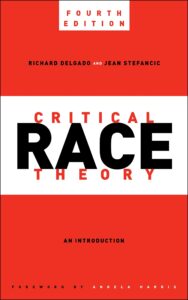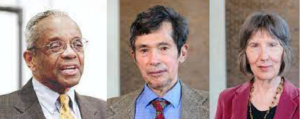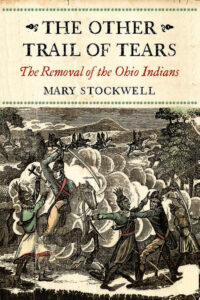 Some things are simple. Some are not.
Some things are simple. Some are not.
The way the term “Critical Race Theory” (CRT for short) is commonly used and misused every day in America is simple. Simple in that undeniably it is too often used carelessly and incorrectly. Simple in that clearly it is too often misused with ill intent. And simple in the sense that both of these uses are dangerous.
The meaning and importance of Critical Race Theory itself, however, is anything but simple. CRT is complex. It is complicated. Elements of it run through nearly all aspects of American society. Understanding it, appreciating it, and responding appropriately to it requires purpose and reflection and is essential to preserving our democracy and ensuring equal and just treatment for every citizen and would-be citizen.
The most accessible description of CRT is that it’s a field of multidisciplinary study of all the ways in which people of color (principally but not exclusively) have been discriminated against over time in American society, law, and government policymaking and implementation. Together with the ways in which various forms of such discrimination are ongoing. And how to combat the effects of all that.
 Critical Race Theory emerged during the last two decades of the 20th century with legal scholars like Derrick Bell of the New York University School of Law and Richard Delgado and Jean Stefancic, then at the University of Alabama Law School and now at the Seattle University School of Law.
Critical Race Theory emerged during the last two decades of the 20th century with legal scholars like Derrick Bell of the New York University School of Law and Richard Delgado and Jean Stefancic, then at the University of Alabama Law School and now at the Seattle University School of Law.
In their book Critical Race Theory: An Introduction, recently released in a new, 4th edition, Delgado and Stefancic need 198 pages to describe CRT and its components. They begin this way: “The critical race theory movement is a collection of activists and scholars engaged in studying and transforming the relationship among race, racism, and power.” It “considers many of the same issues that conventional civil rights and ethnic studies discourses take up but places them in a broader perspective that includes economics, history, setting, group and self-interest, and emotions and the unconscious.” It looks at equality theory, legal reasoning, enlightenment rationalism, and neutral principles of constitutional law. There are hundreds of scholars all over the country studying and writing about these.
Contrary to what Critical Race Theory detractors would have us believe, this is not something that can be boiled down to a social studies curriculum unit in elementary or secondary school. It goes beyond the normal teaching of factual history in age-appropriate amounts and manners. That factual history does, however, appropriately include topics like slavery, the Trail of Tears, segregation, and the Civil Rights Movement.
I blame two groups chiefly for the oversimplified way in which the term is commonly misused. The first of these is composed of far-right politicians, white nationalists, and all who share their racist ideologies. The second is the media.
Among all the agenda-driven misrepresentation of current events and all the ineffective and unhelpful soundbite reporting that too frequently passes for journalism these days, the media’s superficial and often incorrect and inappropriate use of “Critical Race Theory” is especially alarming. Too few reporters explore or even reference the depth and complexity of CRT. Too many allow racists to get away with using the term as shorthand for any aspect of racial equality and justice they oppose and want to denigrate.
 Even more alarming, however, is the mean-spirited and disgraceful way that racists do that. How they use “Critical Race Theory” as a distraction or a mask for their racism while denying history and decrying efforts to correct past and present societal injustices to people who don’t look, speak, and act like them and are therefore both despised and feared by them.
Even more alarming, however, is the mean-spirited and disgraceful way that racists do that. How they use “Critical Race Theory” as a distraction or a mask for their racism while denying history and decrying efforts to correct past and present societal injustices to people who don’t look, speak, and act like them and are therefore both despised and feared by them.
These racists don’t want to be accused of believing or doing anything wrong. Many even argue that they aren’t racists. But they don’t want their children to be taught that people of color or other disparaged groups have been or are being wronged, and they don’t want themselves or their children to feel any guilt or any responsibility for any of that treatment or for ameliorating it. Let me say that another way: They want to hide truth.
 Anyone who doesn’t believe that CRT is rooted in reality and that failing to address the wrongs it identifies is criminal is either ignorant, uninformed, or intentionally discriminatory. Or has never heard of the following or seeks to imagine or pretend that they never happened: seizure of indigenous peoples’ land, efforts to erase their culture, enslaving African Americans, racial segregation, Jim Crow laws, anti-immigration laws and policies, anti-gay rights laws, anti-Semitism, racial profiling, redlining in real estate law, disparity in access to health care, hate speech, race-based gerrymandering, and voting rights restrictions—among many other wrongs.
Anyone who doesn’t believe that CRT is rooted in reality and that failing to address the wrongs it identifies is criminal is either ignorant, uninformed, or intentionally discriminatory. Or has never heard of the following or seeks to imagine or pretend that they never happened: seizure of indigenous peoples’ land, efforts to erase their culture, enslaving African Americans, racial segregation, Jim Crow laws, anti-immigration laws and policies, anti-gay rights laws, anti-Semitism, racial profiling, redlining in real estate law, disparity in access to health care, hate speech, race-based gerrymandering, and voting rights restrictions—among many other wrongs.
It isn’t weak, wrong, or “anti-American” to acknowledge these aspects of our history and our present. Acknowledging these things is right and pro-American. What is wrong, weak, and anti-American—and this is simple—is trying to ignore them, erase them from memory, keep our children from learning about them, and failing to do everything possible to address the harm they have done or are doing to millions of our fellow citizens and would-be citizens.
George Rollie Adams is a historian, educator, and award-winning author of South of Little Rock, Found in Pieces, and Look Unto the Land—authentic and compelling novels about small town race relations in the Jim Crow and Civil-Rights-era South, available here.
To be notified of new posts, please email me via the Contact page.